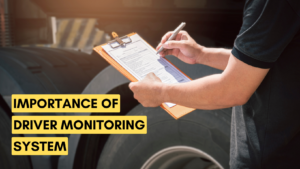Humans have progressed so much that vehicles can talk to us. Vehicles give us valuable information about their performance and safety. This technology is called Telematics. In simple terms, telematics combines telecommunications and informatics to gather data from vehicles. Then fleet managers go through the data to get deep insights. These insights help them increase safety, monitor vehicle performance, and improve maintenance schedules.
What is Telematics?
Telematics is the science of sending, receiving, and storing information using telecommunication devices. In vehicles, it involves using sensors and GPS technology to collect data on various points. The points include speed, location, fuel consumption, engine health, and driver behavior. The data is sent wirelessly to a central system which the fleet managers can access. Telematics systems helps fleet managers in decision-making.
Enhancing Safety
One of the basic uses of telematics is insights to increase road safety. By going through the vehicle data, fleet managers can identify the risky driving behaviors of drivers. This includes hard braking, excessive speeding, and sudden lane changes. This information allows them to provide their drivers with proper driver training programs. These programs are aimed to improve behavior and reduce accidents.
Telematics data also helps in monitoring driver fatigue and how alert the driver is. This helps in preventing accidents caused by bad driving. In case of emergencies, telematics systems can automatically send alerts to emergency services. Additionally, it also provides crucial information such as the location and the impact of the incident happened.
Monitoring Vehicle Performance:
The data from telematics provides you with valuable insights into the performance of your vehicles. By going through this data, fleet managers can monitor fuel efficiency, engine health, and maintenance needs. For example, if the vehicle is consuming more fuel than usual or not. In case the usage is more than usual, there might be a maintenance issue. Or it might be that the drivers have become inefficient.
Thus, by looking at these issues, fleet managers can optimize fuel consumption, reduce costs, and minimize vehicles breaking down. Telematics data also enables you to schedule maintenance. It helps you keep a check on vehicle components and give alerts to fleet managers when servicing is required. Thus, it aids in preventing unexpected breakdowns and reducing repair expenses.
Optimizing Maintenance Schedules
Telematics improves maintenance practices by giving you predictive and preventive maintenance. Instead of being focused on fixed schedules or sudden repairs, fleet managers can use telematics data. It identifies maintenance needs based on how much the vehicle has been used and its performance. This is done by checking engine temperature, oil pressure, tire wear, and other parameters.
The fleet managers can schedule maintenance tasks early on, reducing the chances of repairs and improving overall vehicle life. Scheduling your maintenance ensures that vehicles are always in optimal working condition. It increases your vehicle productivity, customer satisfaction, and savings.
THE FUTURE OF TRANSPORTATION
Telematics is transforming the fleet management and logistics industry by providing valuable data insights. These data help enhance safety, monitor vehicle performance, and optimize maintenance schedules. This technology allows fleet managers to address potential issues beforehand helping reduce accidents and improve efficiency. By using the power of telematics, fleet managers can create a safer environment on roads, reduce costs, and deliver better services to their customers. With continuous improvements in technology, telematics will have an even more important role in the near future of transportation.






Leave a Reply